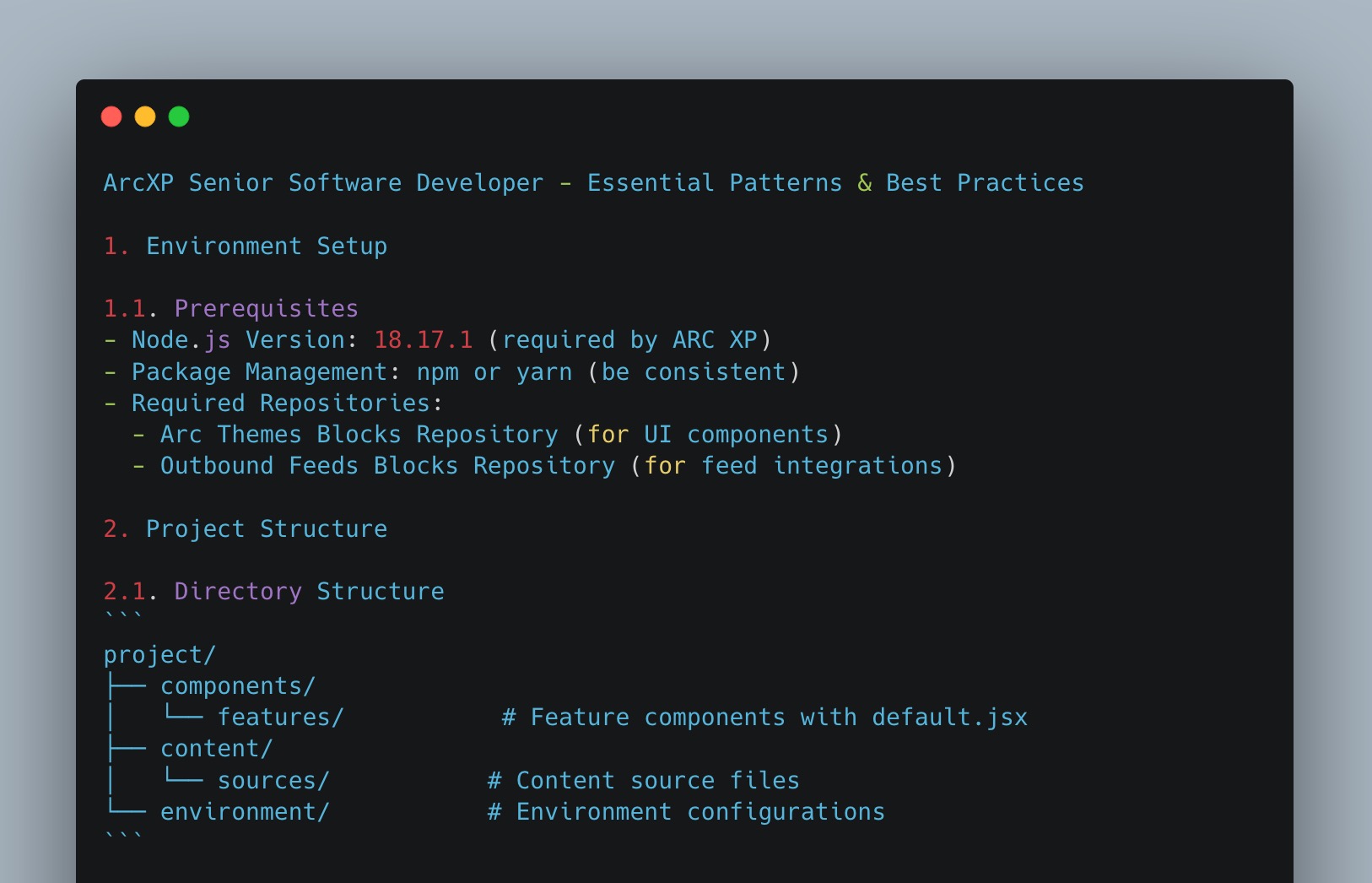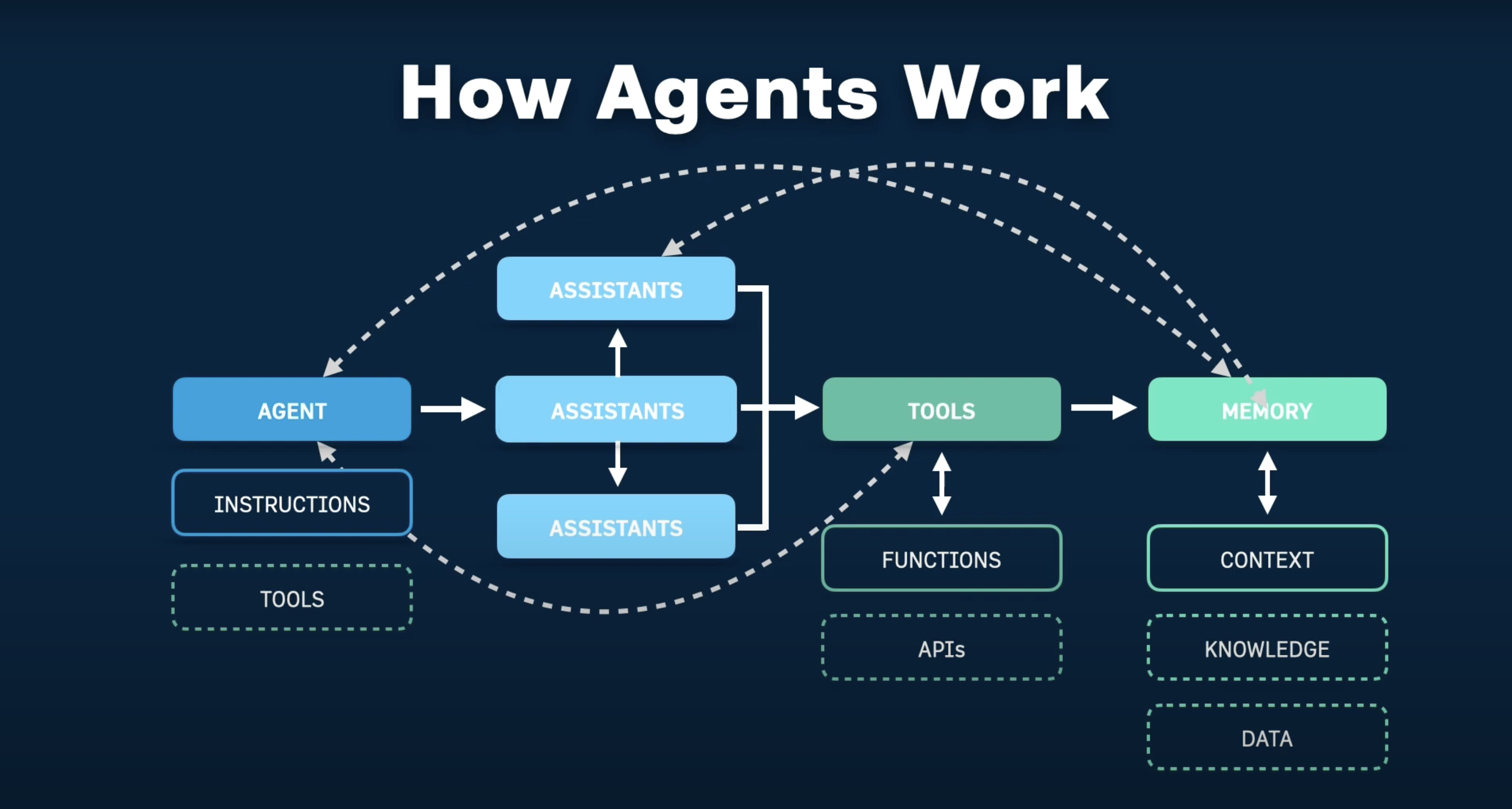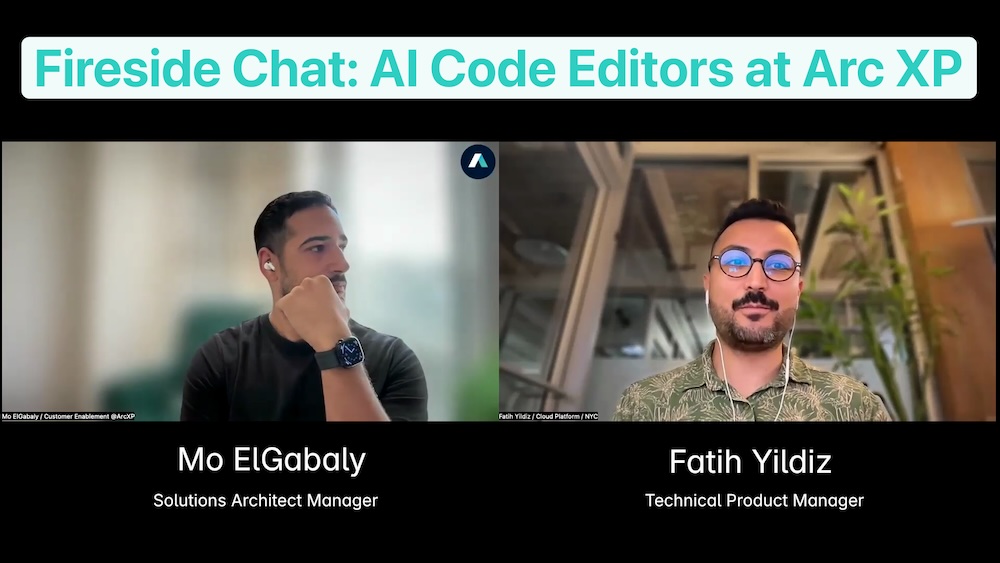As developers working Arc XP PageBuilder bundle code, we often work in highly customized codebases—full of bespoke content sources, renderable blocks, and platform integrations unique to our organizations’ needs.
We’ve been actively playing with Cursor and refining our .cursorrules setup to create the best context for an AI developer that can easily navigate complex bundles and apply the right Arc XP-specific knowledge. Imagine being able to ask AI to help you write test cases, reverse engineer a template, or explain how a content source works—all within the context of your own repo.
We wanted to share our .cursorrules so you can start developing easier with the Arc XP platform—whether you’re debugging a complex rendering issue or onboarding a new teammate.
What Is .cursorrules?
.cursorrules is a developer-facing configuration file that defines custom behavior, context, and helper instructions for AI tools like Cursor, a coding-focused AI IDE. Think of it as an onboarding doc, memory file, and workflow primer—all in one.
When added to your repo, Cursor (or compatible tools) can parse this file and tailor its suggestions, explanations, and code completions accordingly.
In our case, we’ve built a .cursorrules file optimized for Arc XP PageBuilder development—one that reflects our stack, our vocabulary, and our mental model for bundles, content sources, caching layers, and more.
Why We Use .cursorrules in Arc XP Bundles
Here’s what we use it for in our day-to-day bundle development:
- ✅ Ask AI to generate or debug content source logic (
resolve,transform,query) - ✅ Explore which block compatible with which content source
- ✅ Write or refactor tests for rendering logic (i.e: a unit test for a feature/chain)
- ✅ Write deployment verification test (like integration tests - i.e. “Did we break the render stack?”)
- ✅ Understand core rendering stack: Engine features (like partial caching, static render), global content sources
Try It Yourself
If you’re developing custom features inside Arc XP PageBuilder, especially with Micro Experiences or Engine experiments, this approach can become a force multiplier.
Just add .cursorrules to your bundle repo, then try it with Cursor or any IDE plugin that supports OpenAI-compatible models with file context.
Even though we are referring to Cursor and its rule file format, the rule file can be used as general context to any AI tool, including other IDEs like VSCode Copilot (in .github/copilot-instructions.md file) or Windsurf (in windsurfrules file). Also keep in mind these IDEs are evolving fast too. The rules files location or names may change, but following context will most likely stay relevant.
Here is the full .cursorrules file contents:
See the file in GitHub: https://github.com/arcxp/ai-coding-editor-rules/blob/main/cursorrules-V1
We’ve only scratched the surface here. These set of .cursorrules is still evolving. We encourage you to experiment a lot.





